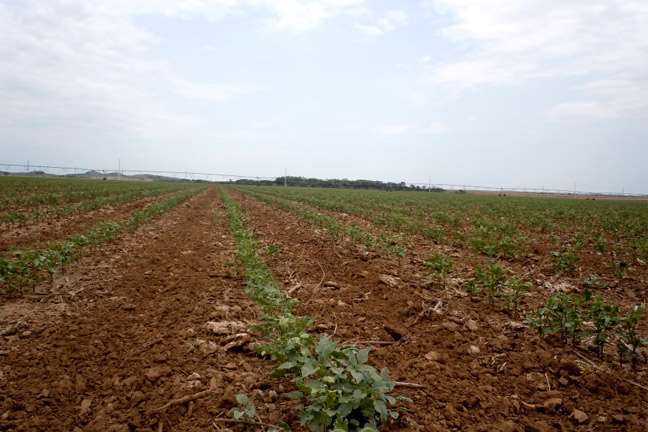
U.S. cotton producers intend to plant 11.0 million cotton acres this spring, up 9.4 percent from 2016, according to the National Cotton Council’s 36th Annual Early Season Planting Intentions Survey, which indicates also that planted acres of cotton in Oklahoma are expected to increase by over 30 percent this year.
Upland cotton intentions are 10.8 million acres, up 8.8 percent from 2016, while extra-long staple (ELS) intentions of 266,000 acres represent a 36.9 percent increase. The survey results were announced today at the NCC’s 2017 Annual Meeting in Dallas, Texas.
Dr. Jody Campiche, the NCC’s vice president, Economics & Policy Analysis, said, “Planted acreage is just one of the factors that will determine supplies of cotton and cottonseed. Ultimately, weather, insect pressures and agronomic conditions play a significant role in determining crop size.”
She said that with abandonment assumed at 12 percent for the United States, Cotton Belt harvested area totals 9.7 million acres. Using an average U.S. yield per harvested acre of 830 pounds generates a cotton crop of 16.8 million bales, with 16.0 million upland bales and 760,000 ELS bales.
The NCC questionnaire, mailed in mid-December 2016 to producers across the 17-state Cotton Belt, asked producers for the number of acres devoted to cotton and other crops in 2016 and the acres planned for the coming season. Survey responses were collected through mid-January.
Campiche noted, “History has shown that U.S. farmers respond to relative prices when making planting decisions. During the survey period, the cotton December futures contract averaged 70 cents per pound, which is higher than year-ago levels. Looking at competing crops, corn prices were lower than year-ago levels while soybean prices were about 12 percent higher. The price ratio of cotton to corn is more favorable than in 2016.”
Southwest growers intend to plant 6.6 million acres of cotton, an increase of 10.7 percent. Increases in cotton area are expected in each of the three states. In Oklahoma, a 30.1 percent increase is expected as wheat acreage declines. In Kansas, land is shifting away from wheat, corn, and soybeans. Overall, Texas acreage is expected to increase by 9.5 percent as land shifts away from corn and wheat.
Survey respondents in the Southeast indicated a 0.1 percent increase in the region’s upland area to 2.2 million acres. Across the six states, the results are mixed with increased acreage in Alabama and Florida and a decrease for the other four states. In Alabama, the survey responses indicate 14.2 percent more cotton acreage and less corn and wheat area. In Florida, respondents indicated more cotton and less soybeans. In Georgia, cotton acreage is expected to decline by 3.1 percent with ‘other crops’, likely peanuts, pulling acres from cotton, corn and wheat. In South Carolina, acreage is expected to decline by 0.4 percent as cotton acres shift to soybeans and ‘other crops.’ In North Carolina, a 4.8 percent decline is expected as cotton acreage shifts to soybeans and ‘other crops.’ Cotton acreage is expected to decline by 1.0 percent in Virginia as acreage shifts to corn and ‘other crops.’
In the Mid-South, growers have demonstrated their ability to adjust acreage based on market signals, in particular, relative prices of cotton and competing crops. This year’s survey results are no different with growers intending to plant 1.7 million acres, an increase of 12.8 percent from the previous year. Across the region, all states are expected to increase cotton acreage while decreasing acreage of corn and ‘other crops.’ The largest increase was reported in Mississippi with 26.8 percent more cotton acreage in 2017. Mississippi respondents expect to decrease acreage of all other crops as more cotton acreage is planned. In Tennessee, cotton acreage is expected to increase by 16.6 percent as land shifts away from corn. In all states except Mississippi, soybean acreage is expected to increase. In Arkansas and Missouri, corn, wheat, and ‘other crops’ are expected to decline. In Louisiana, respondents indicated more cotton, soybeans, and wheat and less corn and ‘other crops.’
Far West producers are expecting to plant 268,000 upland cotton acres – a 15.1 percent increase from 2016. Arizona is responsible for the large increase, with California acreage down slightly and New Mexico acreage up slightly. The survey results for Arizona suggest a shift from corn and ‘other crops’ to cotton.
The increase in cotton acreage is largely the result of weaker prices of competing crops, improved expectations for water availability in the West, and above average cotton yields in 2016.
Click here to see more...